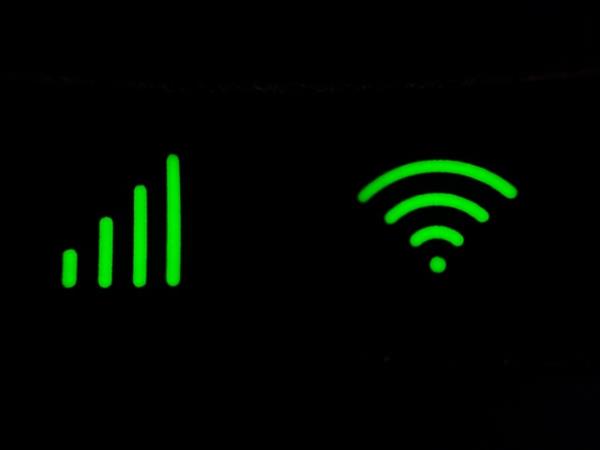17 June 2022

Well, World Wi-Fi Day offers a perfect opportunity to consider the value Wi-Fi brings; this is especially true for the business economy, which relies on great connectivity. Now more than ever, Wi-Fi plays a crucial role in this as organisations get to grips with the working from home era.
We have spoken to experts from across the industry to talk about the current state of Wi-Fi and the challenges businesses are faced with when providing great connectivity for employees.
Businesses getting to grips with Wi-Fi
“Home connectivity hasn’t long been a priority for businesses”, explains Jonathan Bridges, chief innovation officer, Exponential-e, “but productive home working now depends on high-speed connectivity, making it mission-critical for employers.
Thankfully, according to Kevin Robinson, senior VP, Wi-Fi Alliance, the latest generation of Wi-Fi, Wi-Fi 6, has all the features today’s companies need to equip their employees with great connectivity. Robinson says, “the availability of 6 GHz worldwide for Wi-Fi will open new opportunities for Wi-Fi 6E and future Wi-Fi generations. More than 60 countries worldwide are bringing tremendous value to their citizens by making the spectrum available for Wi-Fi 6E and future Wi-Fi generations, and more regulators – almost weekly – are recognising the tremendous benefits the spectrum brings for Wi-Fi . Wi-Fi is continuing to evolve to deliver greater performance, capacity, and latency and additional spectrum will accelerate this innovation.”
However, while Wi-Fi 6 has the capacity to deliver these great benefits, businesses are facing a number of connectivity challenges in the remote working era.
Bumps in the road for Wi-Fi
According to Bridges, “one of the biggest challenges employees face is the heavy competition for Wi-Fi bandwidth between different devices and users. Many connections still crumble under the heavy load, with frozen cameras and aborted calls still all too common.” He says It’s up to employers, not employees, to remedy this issue. “That's why solutions that automatically divide up, prioritise and distribute the bandwidth coming into homes to where it’s needed, such as software-defined networking, are becoming increasingly popular. They're helping employees’ meetings run more smoothly, and preventing interruptions by kids tuning into cartoons on the iPad, or other family members listening in to the latest tunes via their smart speaker.
“Businesses need to wake up to this reality and ensure by the end of this year, those interruptions are a thing of the past. Good connectivity shouldn’t be seen as a perk, but a standard practice for all employees.”
To add to this, Andy Thompson, research evangelist, CyberArk Labs explains that, “as we celebrate the convenience and opportunities that blanket WiFi connectivity has brought with it,
Thompson continues, “more than just a danger to the individual, the ability to crack WiFi networks is now a danger to organisations. We now live in the world of hybrid work, which has expanded an already porous corporate security perimeter. The routers that were susceptible to this attack are used by households and businesses worldwide. Worse, this hack was undetectable and couldn’t have been stopped by two-factor authentication, making it incredibly powerful. The risk to a business lies in an attacker infiltrating a network and then moving laterally to high-value applications or data, such as a billing system. Another possible vector is for the attacker to gain initial access to a remote user’s WiFi and then jump to the user’s computer and wait for a VPN connection, or for the user to go to the office and move laterally from there.”
“Upgrading to WPA3 would go some way to stopping such attacks”, Thompson advises, “but – much more importantly - using passwords that take decades to crack is a must to protect both yourself and your employer.”
Why Wi-Fi when you can 5G?
When considering these challenges, it begs the question as to why businesses should opt for Wi-Fi when 5G is so readily available. Well, according to James Bristow, SVP EMEA, Cradlepoint, that shouldn’t necessarily be the case. In his opinion, as companies increase the adoption of IoT devices and rely on strong and stable communications for critical business functions, it is becoming clear that Wi-Fi has flaws. Bristow says, “while
“As companies continue to modernise, business leaders will start to turn towards next-gen networks like 5G to support their company’s needs. For example, Private Cellular Networks (PCN) enable organisations to have greater control over their networks' coverage, security and reliability. They enable IT teams to control who has visibility and access to the network. Whereas Wi-Fi is an open spectrum, meaning anyone can view it and search for vulnerabilities. PCNs can also be configured to prioritise network traffic, ensuring critical services always have sufficient bandwidth to complete their tasks. It also allows businesses to be more flexible, easily scaling coverage to areas that need it by simply plugging in a new router, compared to installing a new wireless infrastructure required for Wi-Fi.
“Wi-Fi will always have a place within a company’s connectivity strategy. However, it is clear that PCNs, and next-gen cellular networks, will be able to bring better business use cases, combining reach and reliability with greater simplicity, agility, and security. They make it easier for IT teams to manage dispersed networks, troubleshoot problems remotely, and allow businesses to adapt and keep up with the current hybrid working era.”
Though Robinson isn’t so sure, he argues that since its introduction in 2019, Wi-Fi 6 has seen rapid adoption, surpassing 50 percent market share in three years compared to four years for Wi-Fi 5 – and this doesn’t show any sign of slowing down. Robinson explains, “this accelerated adoption has been driven by demand for high performance Wi-Fi in phones, tablets, and PCs. Its advanced features and capabilities are also bringing new opportunities for the Internet of Things (IoT), service provider deployments, and dense public areas to deliver better experiences.
“IoT spans numerous use cases with diverse connectivity demands, requiring both high bandwidth and low power, low latency capabilities. While difficult to meet these demands with a single technology in the past, Wi-Fi 6 offers the solution. It provides higher performance, lower latency, and faster data rates, complementing the deployment of 5G networks by ensuring connectivity indoors, in public venues and smart buildings, and in underserved areas, where 5G is far less effective. With features like Orthogonal Frequency Division Multiple Access (OFDMA), Wi-Fi 6 can better serve the diverse needs of IoT devices.”
Wi-Fi in the UK
So where does that leave us? Well it’s clear that connectivity and Wi-Fi in particular are crucial to business success, but according to Rob Hamlin, chief strategy officer at CityFibre, “in the UK we’re playing catch-up to much of the rest of the world to build a world class full fibre digital infrastructure, the gold standard around the globe for connectivity.” However, the good news according to Hamlin is that “the Government has set the industry ambitious targets to bridge our connectivity gap, and we are making fantastic progress, doubling the availability of Full Fibre since 2019. The prize for delivering this infrastructure is clear and our rollout to a third of the UK will generate £38bn in economic benefits over the next 15 years.”
So, Hamlin concludes it nicely, “this World Wi-Fi day is an opportunity to recognise the progress the UK is making to deploy Full Fibre, and it’s also a chance to focus minds and redouble efforts to ensure Full Fibre connectivity is powering the country for generations to come.”










